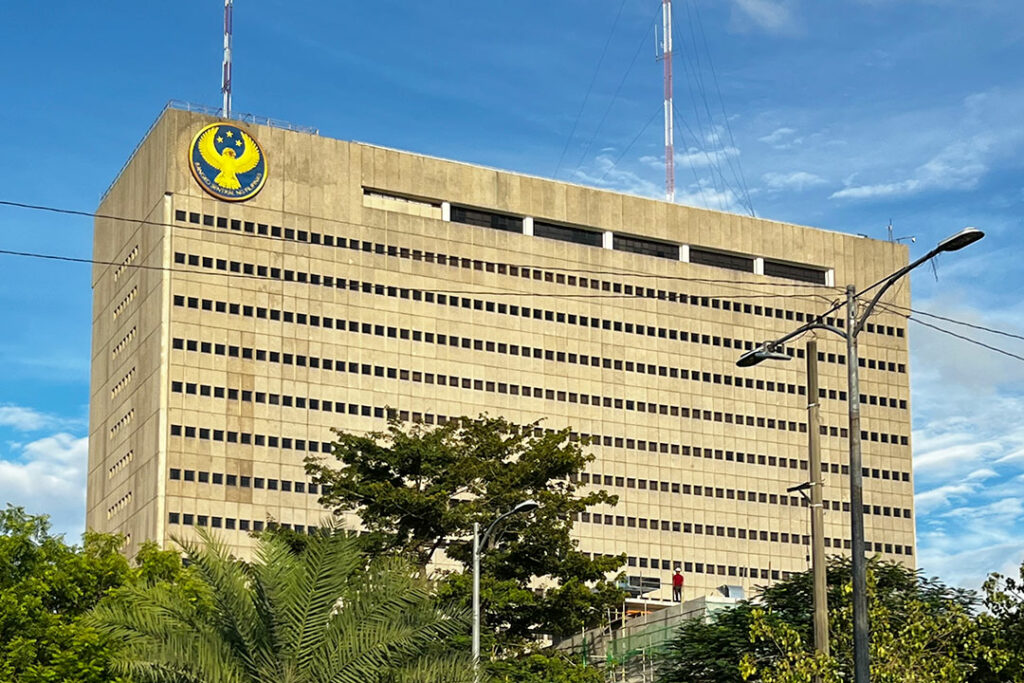




Policy Rate Updates: Double cut finale
 DOWNLOAD
DOWNLOAD

Monthly Economic Update: One for the road
 DOWNLOAD
DOWNLOAD

Inflation Update: Still low, still slow
 DOWNLOAD
DOWNLOAD


BSP seen to start easing in 3rd quarter

The Bangko Sentral ng Pilipinas (BSP) could begin easing policy as early as the third quarter if inflation continues to stabilize, analysts said.
“At the earliest, rate cuts could begin next quarter, which would ease the pressure on households,” Moody’s Analytics said in its weekly highlights report.
ING Bank N.V. Manila Senior Economist Nicholas Antonio T. Mapa said inflation might continue to “surprise on the downside before falling sharply by the third quarter.”
“By then, we expect BSP to have scope to start easing monetary policy all the more given the signs of a slowing economy after first-quarter GDP showed a disappointing print of 5.7% year on year,” he said in an e-mailed note on Monday.
BSP Governor Eli M. Remolona, Jr. has said the central bank will consider rate cuts if inflation can settle firmly at around 3% for several months.
The Monetary Board is set to have its next policy review on Thursday. A BusinessWorld poll showed that 17 of 19 analysts expect the central bank to keep its key rate steady at a 17-year high of 6.5%.
In a follow-up e-mail, Moody’s Analytics economist Sarah Tan said the BSP would consider inflation and the peso’s recent performance in its monetary decisions.
“There has been good progress made on the inflation front, with the latest print for April settling within BSP’s 2-4% target range for a fifth straight month,” she said.
Inflation quickened to 3.8% in April from 3.7% in March. However, it was the fifth straight month that inflation settled within the BSP’s 2-4% target.
The BSP expects inflation to average 3.8% this year.
“While we expect inflation to slightly bump around the upper limit over the next few months as dry weather associated with the El Niño climate pattern hurts food harvests and disrupts supply, inflation will return to the target range by early in the third quarter,” Ms. Tan said.
The central bank earlier cautioned that inflation could temporarily overshoot the 2-4% target in the next two quarters due to base effects and weather conditions that have hurt agricultural output.
The El Niño in the tropical Pacific is seen weakening but “hotter and drier conditions” continue to persist, according to the state weather bureau.
Farm damage from El Niño had climbed to P6.35 billion as of May 8. Rice was the most affected crop, accounting for 51.93% or P3.3 billion of the total damage. This was followed by corn at P1.94 billion and high-value crops at P1.07 billion.
“El Niño is expected to wane starting in May and we can expect some relief from the heat thereafter, which could also benefit our agriculture sector,” Mr. Mapa said.
Agricultural production was flat in the first quarter, growing by 0.05% to P428.99 billion amid the dry spell.
Mr. Mapa said inflation could sharply decelerate by the third quarter.
“Market participants are currently predicting inflation breaching the top end of the BSP’s inflation target of 2-4%. However, if rice prices stay unchanged at roughly P55 per kilo, oil prices sustain their decline and domestic demand stays soft, we could see inflation skirt the target and drop sharply as early as August,” he said.
Meanwhile, Ms. Tan noted that while the peso has weakened in the past few weeks, it is expected to stabilize next quarter.
“Should these developments materialize, it will give the BSP confidence to trim rates as early as August — the only Monetary Board meeting in the third quarter,” she added.
After Thursday, the Monetary Board’s next two policy meetings are on June 27 and Aug. 15.
However, Ms. Tan said rate cuts could be delayed if inflation further accelerates.
“However, there is a chance that monetary easing could be delayed till October should inflation accelerate above the target range for longer than expected, or if the Philippine peso weakens further,” she said.
“In this regard, the BSP will keep an eye on the movements by the US Federal Reserve to ensure stability of the peso,” she added.
Meanwhile, HSBC economist for ASEAN (Association of Southeast Asian Nations) Aris D. Dacanay said the BSP would likely cut rates by the fourth quarter, after the US Federal Reserve begins easing.
“The BSP has the luxury to keep its monetary stance tight while the Fed maintains a more hawkish tone. Liquidity in the system remains intact so there is no urgency to loosen the monetary reins,” he said.
Markets were initially anticipating the US central bank to cut rates as early as June, but this has been pushed back to as late as the fourth quarter due to persistent inflation.
Mr. Remolona earlier said that while the central bank monitors the Fed, its decisions are independent.
The US central bank kept its Fed funds rate steady at 5.25-5.5% at the end of its April 30-May 1 meeting. — By Luisa Maria Jacinta C. Jocson, Reporter
This article originally appeared on bworldonline.com





 By BusinessWorld
By BusinessWorld